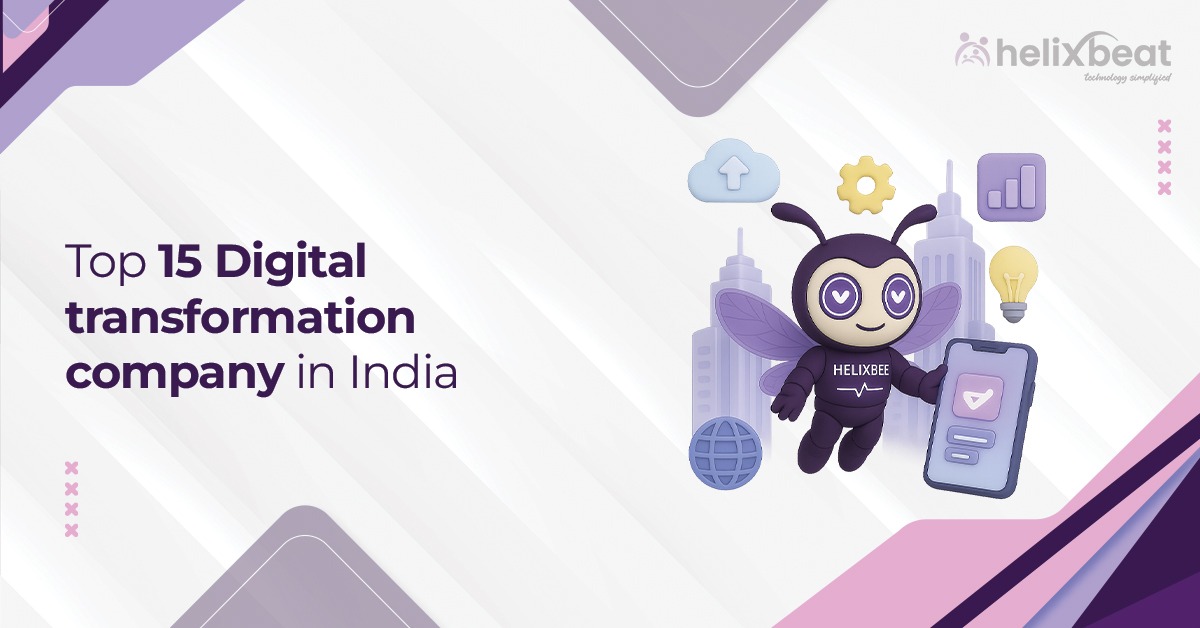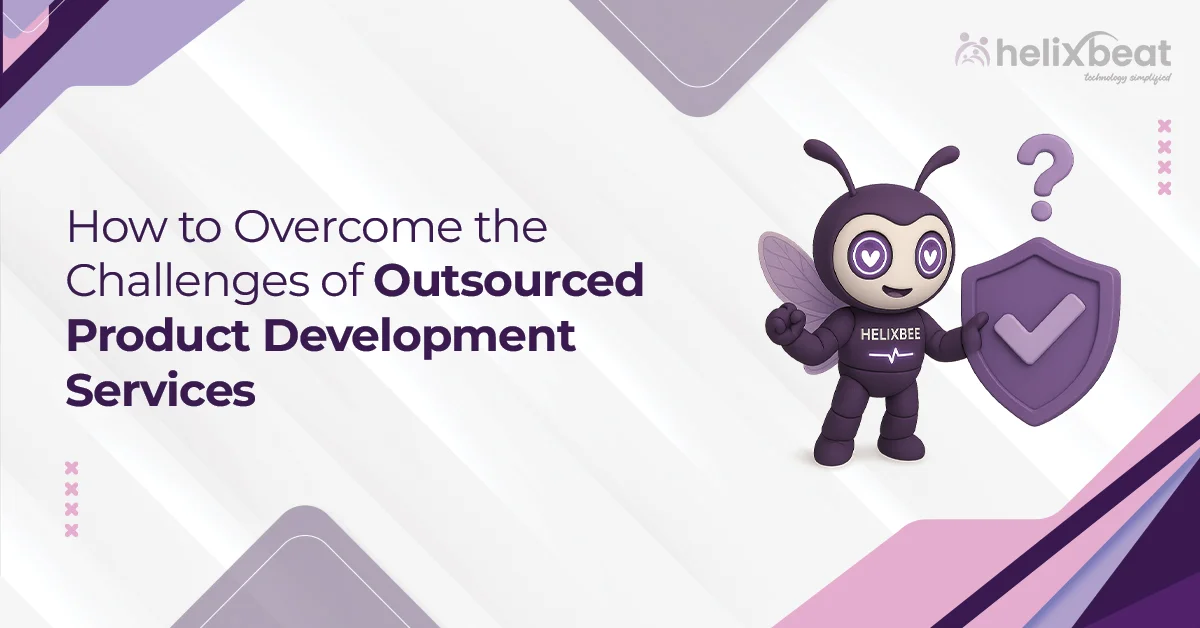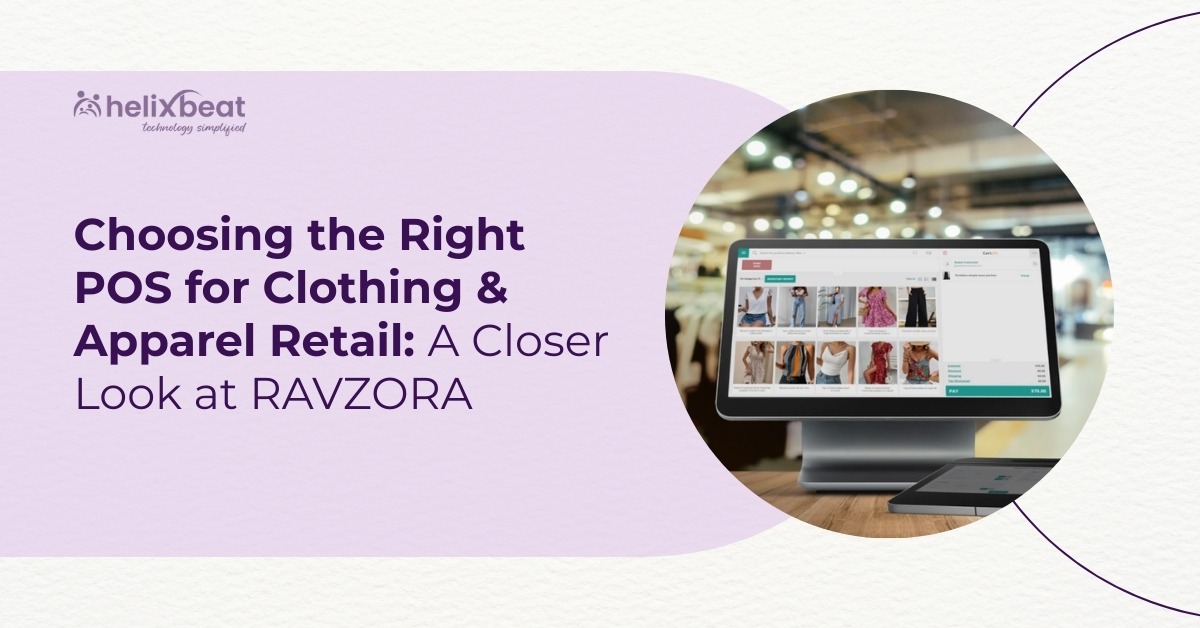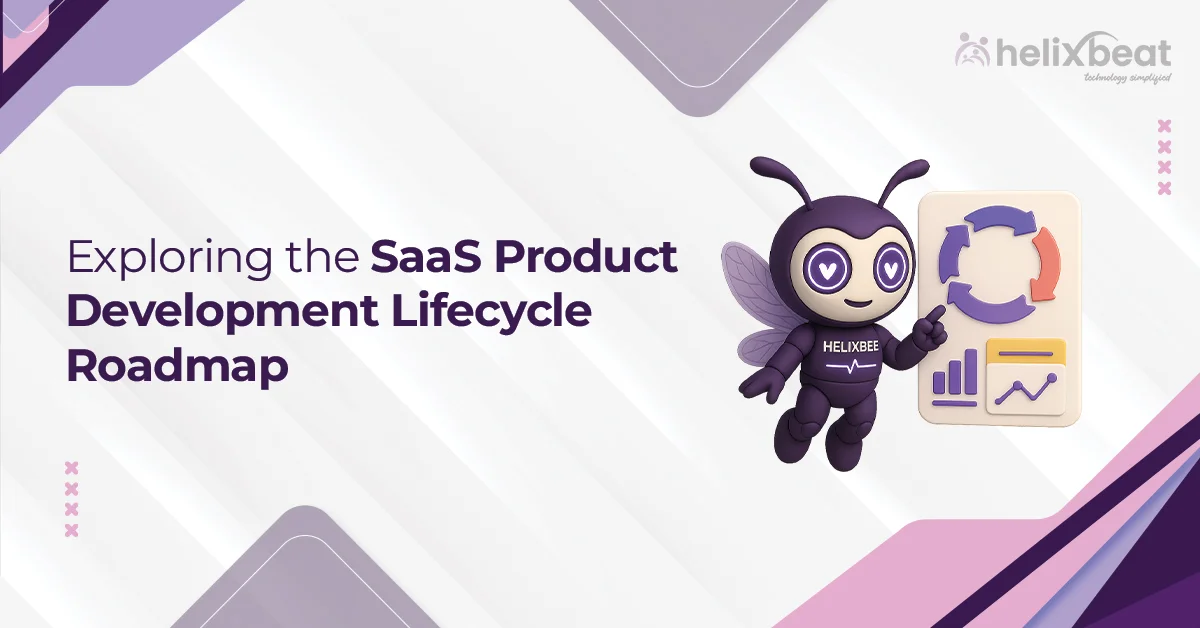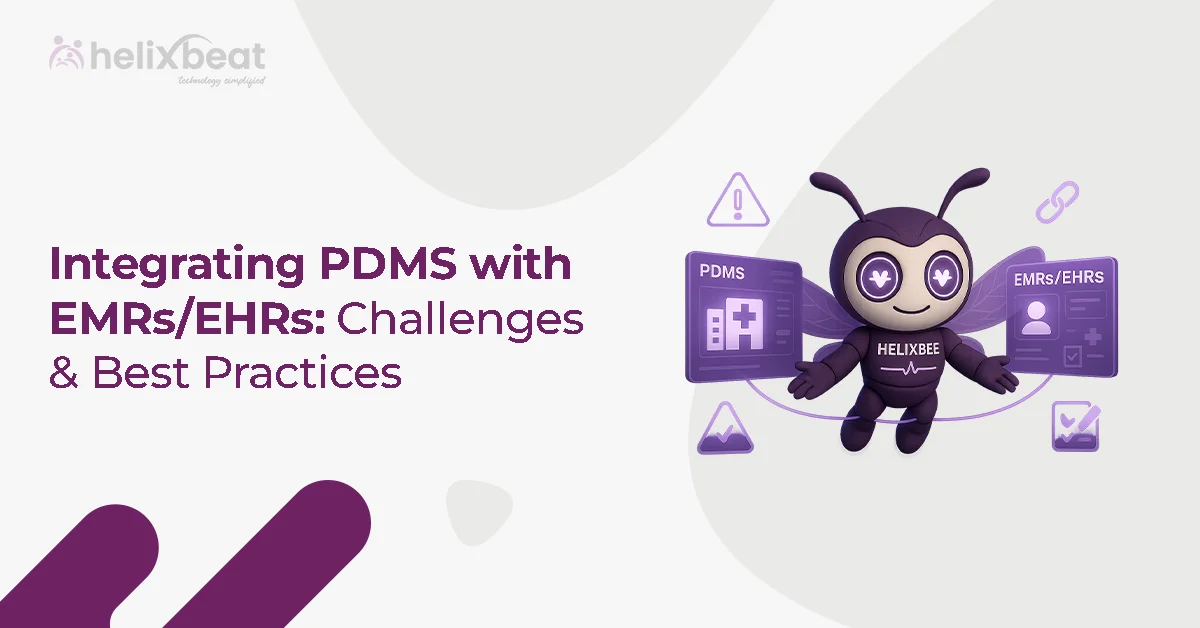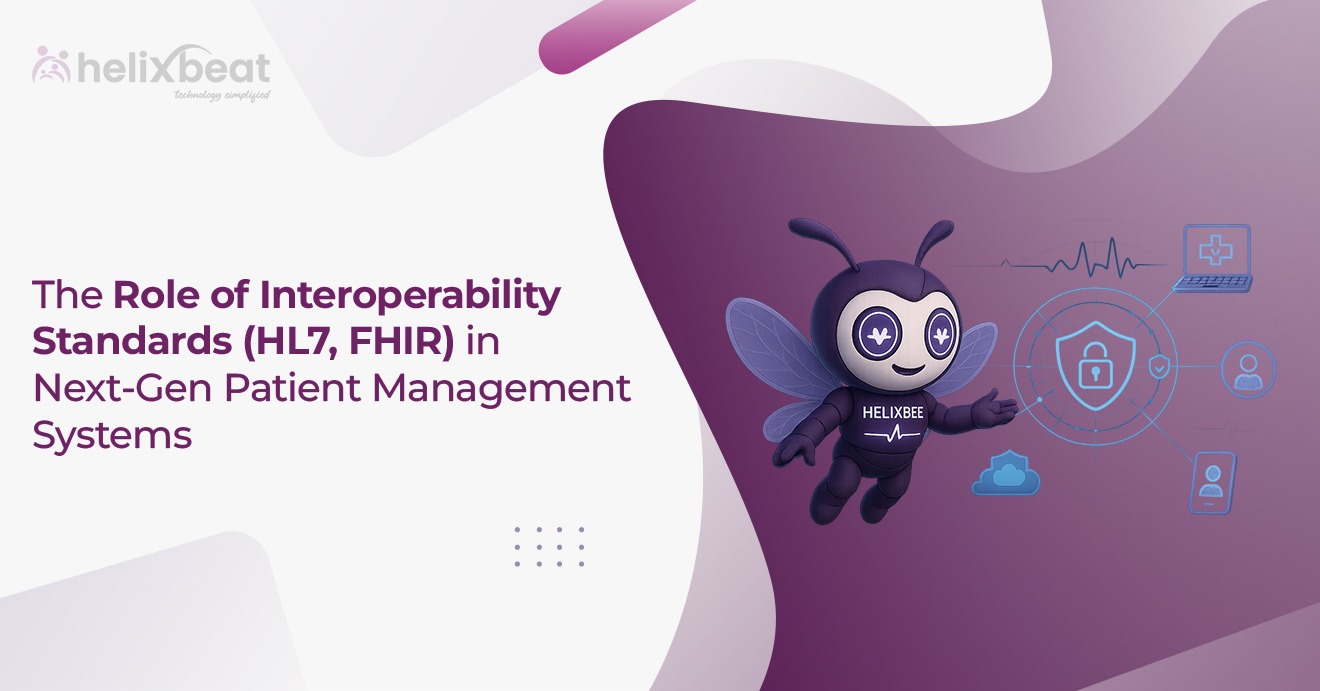Healthcare is evolving rapidly, and at the core of this transformation lies healthcare data interoperability. Systems, devices, and applications can exchange, interpret, and use healthcare information seamlessly across organisational boundaries. However, achieving this level of connectivity would be nearly impossible without Application Programming Interfaces (APIs).
APIs have become the silent engines powering real-time communication between health systems, apps, and patient devices. Whether you’re a hospital IT decision-maker, a healthtech developer, or a clinician, understanding how APIs support interoperability is necessary for smarter care delivery.
Let’s explore 7 key use cases where APIs are making a big impact on healthcare data interoperability today.

Table of Contents
1. Seamless EHR Integration Across Health Systems
Why it matters
Hospitals and clinics often use different Electronic Health Record (EHR) systems, which don’t always communicate well with each other. This data silos problem leads to gaps in patient history, duplicated tests, and treatment delays.
How APIs help achieve healthcare data interoperability
APIs act as translators between different EHR systems. Using standards like FHIR (Fast Healthcare Interoperability Resources), APIS facilitate secure data exchange, allowing providers to access critical patient data, such as lab results, medication lists, and imaging, from other organisations, regardless of the EHR vendor.
2. Patient-Centric Mobile Health Applications
Why it matters
Patients are no longer passive recipients of care. They want access to their medical records, prescription details, and wellness insights—often right from their smartphones.
How APIs help achieve healthcare data interoperability
APIs empower mHealth apps by pulling relevant information directly from EHRs, wearable devices, and lab databases. This access allows patients to view their test results, upcoming appointments, and even manage chronic conditions with real-time feedback.
3. Real-Time Clinical Decision Support (CDS)
Why it matters
Because doctors often face time pressure and complex cases, real-time clinical decision-support tools can help them make faster, more informed choices.
How APIs help achieve healthcare data interoperability
APIs can connect CDS tools with EHRs and diagnostic databases to deliver alerts, medication interactions, and treatment recommendations directly into the clinical workflow. This reduces the risk of errors and promotes evidence-based care.
4. Streamlined Insurance and Claims Processing
Why it matters
Billing and insurance-related activities (aka “administrative waste”) are among the costliest aspects of healthcare. Manual entry, documentation errors, and delayed approvals slow down reimbursement cycles.
How APIs help achieve healthcare data interoperability
APIs facilitate instant communication between healthcare providers and payers. They help with eligibility checks, pre-authorizations, claims submissions, and real-time status updates—speeding up the entire revenue cycle process.
5. Telehealth Platform Integration
Why it matters
Telehealth has gained significant momentum, but disconnected video platforms can hinder care coordination. For virtual visits to match the quality of in-person care, patient data must be part of the conversation.
How APIs help achieve healthcare data interoperability
APIs link telemedicine platforms with patient records, diagnostic tools, and post-consultation follow-ups. This way, clinicians have a complete view of the patient during the video call, and any updates from the session are automatically synced with the EHR.
6. Public Health Reporting and Research
Why it matters
Public health surveillance and medical research require access to large-scale, anonymized data. However, manual data collection or outdated reporting tools lead to delays, especially during emergencies like pandemics.
How APIs help achieve healthcare data interoperability
APIs can extract real-time, de-identified data from multiple systems and feed it into centralized databases. This enhances disease tracking, supports clinical trials, and powers predictive models.
7. Interoperability with Wearables and IoT Devices
Why it matters
The surge in IoT medical devices—from glucose monitors to smartwatches—has opened new avenues for proactive and remote care. But without integration, data from these devices remains underutilized.
How APIs help achieve healthcare data interoperability
APIs serve as bridges between IoT platforms and clinical systems. They gather patient-generated health data and push it to care teams for remote monitoring, alerts, and early intervention.
The Bigger Picture: Driving Better Outcomes with API Interoperability
APIs are not just technical tools; they’re strategic enablers. Each use case highlights how data interoperability in healthcare, powered by APIs, enhances the flow of information, reduces duplication, and promotes collaborative care.
Here’s what this means in real terms:
- Shorter wait times
- Fewer redundant tests
- More personalized treatment
- Empowered patients
- Faster reimbursements
Healthcare is a complex ecosystem. APIs help connect it into a more unified experience for patients, providers, and administrators.
Key Considerations When Implementing APIs in Healthcare
While APIs offer critical benefits, there are a few practical points to keep in mind:
1. Data Standards Compliance
Choose APIs built on HL7 FHIR, which promotes consistency across health systems. Using standard formats minimizes compatibility issues and supports regulatory alignment.
AERIS is transforming healthcare by leveraging FHIR-based APIs to enable healthcare data interoperability. These APIs facilitate real-time data exchange between healthcare systems, allowing seamless communication across EHRs, telehealth platforms, and other clinical systems.
2. Privacy and Security Protocols
API access should include strong authentication protocols, audit logs, and encryption. Given the sensitivity of health data, security design must be robust. AERIS uses secure API protocols to protect sensitive patient data and complies with HIPAA regulations.
3. Scalability and Flexibility
A good API strategy supports scaling, whether it’s adding new telehealth modules or integrating more wearable devices later. Flexibility is key to long-term adaptability.
4. Real-Time vs. Batch Data
Understand whether your use case needs real-time data exchange (e.g., CDS alerts) or batched data (e.g., research studies). This will help you select the right API types and infrastructure.
Final Thoughts
Healthcare data interoperability, once a future goal, is now a reality, with APIs providing the necessary power. From EHR integration and telehealth to patient apps and public health reporting, APIs simplify the exchange of data and bridge gaps that once slowed down care delivery.
As healthcare continues to shift towards value-based care and patient-centered models, APIs will play an even bigger role in building a connected ecosystem where data flows freely, actions are timely, and outcomes are improved.
Looking to enhance healthcare data interoperability and drive real-time data exchange in your organization? Discover how AERIS can streamline your systems, improve patient care, and boost operational efficiency. Get in touch with us today!
FAQs
1. What is healthcare data interoperability?
Healthcare data interoperability refers to the ability of different healthcare systems and devices to exchange and use patient information seamlessly.
2. How do APIs help improve healthcare data interoperability?
APIs facilitate real-time data exchange between healthcare systems, enabling smooth communication and better decision-making.
3. What are the main benefits of using AERIS in healthcare?
AERIS offers real-time data access, seamless system integration, improved patient care coordination, security, compliance with regulations, and scalability for future needs.
4. Can AERIS integrate with existing healthcare systems?
Yes, AERIS integrates seamlessly with existing EHRs, telehealth platforms, and other healthcare systems without disrupting current operations.
5. What kind of healthcare data does AERIS handle?
AERIS supports a wide range of healthcare data, including patient medical records, lab results, imaging reports, prescriptions, and more.
6. How can AERIS benefit healthcare providers and patients?
AERIS improves data accessibility, reduces redundant testing, and enhances care coordination, which leads to better patient outcomes and more efficient operations.







